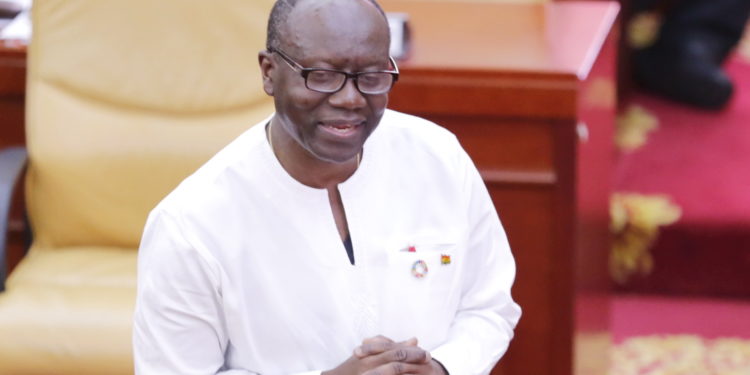
The International Monetary Fund has played down any fears of the impact of rising treasury bill rates on the country’s debt restructuring efforts and debt sustainability, a critical component of the three-year Extended Credit Facility (ECF) with the Bretton Woods institution.
The fund said the current treasury bill rates were consistent with its expectations in achieving debt sustainability over the medium term.
Responding to a question from the Graphic Business at a joint press conference in Accra, the IMF Chief Mission to Ghana, Stephane Roudet, said the cost at which the government was financing itself was of no concern to the IMF.
However, speaking on the Graphic Business X series dialogue on October 9, Economist, Professor Godwin Bokpin, said the rising T-bill rate was a negative outcome that must be corrected immediately by bringing down inflation and the policy rate.
After declining to an eight-year low of 19 per cent in March 2023, from 35.5 per cent at the end of 2022, the 91-day treasury bills has climbed back up to 29.1 per cent. That of the 182-day and 364-day is also going for 31.2 per cent and 33 per cent respectively.
This has led to fears that the government’s continuous reliance on this short-term end of the market to raise money to finance its operations could defeat the purpose of the debt restructuring programme which seeks to promote debt sustainability.
Currently, the international capital market is closed to the country and post the Domestic Debt Exchange Programme, the bond market has been dormant with little or no trades happening on the market.
This, therefore, leaves the country with no other option than to rely on the treasury bill market to raise short-term money to finance its expenditure.
He said the fund was not surprised as the current treasury bill rates were anticipated under the programme.
“This does not come as a surprise to us because inflation is still above 40 per cent and the policy rate is also around 30 per cent so there is no surprise that treasury bill rate is at where it is,” he stated.
He said it was important to note that the current rates were fully in line with the expectations of the IMF.
Under the IMF programme, debt to GDP ratio is expected to reduce to 55 per cent of GDP over the next three years.
Negative outcome that must be corrected
Speaking on the Graphic Business X series dialogue series yesterday, Professor Bokpin said one of the objectives of the DDEP was to introduce a new yield curve, noting that the government made the attempt in March to track down the treasury bill rate but that did not work.
In our projections, we were hoping that the new yield curve would lie below 15 per cent, but the time we did the domestic debt restructuring, there was no proper consultation and the necessary conditional framework to enable that to happen was not present.”
“The Financial Stability fund had not been set up, inflation was still very high, BoG’s policy rate was more than 29 per cent. So in such a higher inflationary environment and the fact that the financial stability find hadn’t been operationalised, it was then difficult to drag down T-bill rates,” he explained.
He also said, given that the government has been priced out from the international capital market, the only medium available to the government to interact with the financial market was the T-bill market and therefore could not enforce the new yield curve.
We have an inverted, not a normal yield curve which says that short-term investments are expensive than long term so to do this, we have make sure that inflation comes down,” he stated.
Progress with debt restructuring
The IMF Chief also noted that the government had made progress in its debt restructuring strategy which was a big plank underpinning the fund supported programme, noting that the government had successfully completed its domestic debt restructuring.
The domestic debt restructuring saw the government swap old bonds valued at GH¢82 billion for 12 new ones at reduced coupon rates and longer tenors.
The exchange of dollar denominated local bonds of about $ 742 million also saw a participation ratio of 91.7 per cent; the exchange of cocoa bills worth GH¢7.7 billion also saw a participation ratio of 97.4 per cent, while the exchange of pension funds holdings of treasury bonds of about GH¢29.6 billion also saw a participation ratio of 95.3 per cent.
On the external front, the government is expected to sign an MoU with the bilateral Official Creditor Committee co-chaired by China and France to restructure its US$5.4 billion debt.
The government is also expected to reach an agreement with its external commercial creditors to restructure its US$14 billion, out of which US$13 billion are in Eurobonds.
Cash flow issues
For his part, the Minister of Finance, Ken Ofori Atta, said the rising treasury bill rates also becomes an issue of cash flow and fiscal space which the government must manage.
“We have to make sure that we can raise resources on the market without compromising on debt sustainability which is a difficult dance,” he stated.
He said bringing down inflation and subsequently policy rate and treasury bill rates was therefore very important to the government.
“Once inflation is down, the Governor of the central bank will respond with the monetary policy decision,” he said.
Happy with direction
The Governor of the Bank of Ghana, Dr Ernest Addison, said the central bank was happy with its current monetary policy direction, noting that it would continue to stay on that path.
Depending on the developments, we will take appropriate decisions. If it happens that inflation is moving down faster, then monetary policy rate will also drop but on the other hand, if it goes up then policy rate will also go up.”
‘So it depends on the development in inflation,” he said.

